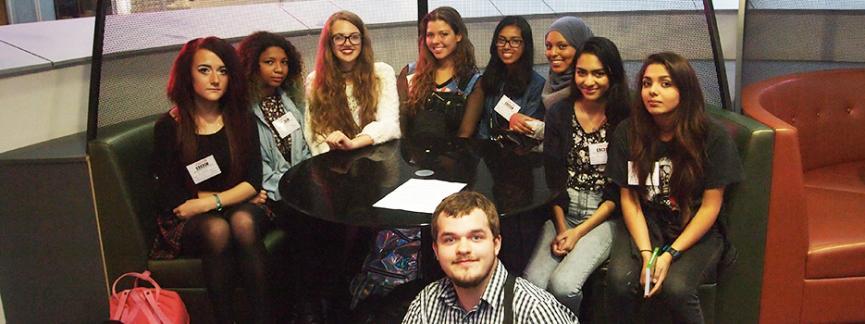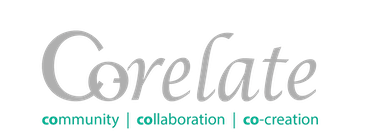Co-creation and how to go about it
Co-creation and how to go about it

DHL are using it to innovate and increase efficiency, the NHS is using it to improve self-management for patients with long-term conditions, while social enterprises and charities are using it to better tell the stories of their beneficiaries. Co-creation has been around as a term for several years now, but it's still only the most strategic and open-minded organisations that are using it well.
What is co-creation?
Co-creation basically means collaborative creation. Other terms include co-design and co-production. This could be for anything - a new product, a way of delivering services or an advertising campaign. At Co-relate, we define co-creation as an activity with a creative output designed to listen to, involve and empower communities.
This could range from:
- older people co-designing a support service that meets their needs
- people with disabilities building an accessible website
- business representatives contributing to a B2B marketing campaign.
What makes it different to a focus group?
Traditional focus groups get people together, test some ideas and usually leave it up to the creatives or the bosses to accept or ignore the feedback.
In co-creation, the ideas and content are generated, tested and approved by the group. They retain collective oversight of the product or service through the development process. Top creatives and other professionals will be involved with the process so they can hear from the audience first-hand and lend their expertise.
In addition to creating something that they care about, participants will also gain or practice skills, for example, in communication, team work and pitching/presentation.
What sort of things can it do?
We're excited at how the NHS is embracing co-production to improve patient experience and the way Ageless Thanet involved older people every step of the way - see their learning report on co-production. Here at Co-relate we specialise in co-creation for creative projects and managing director Jessica Rose has also run co-creation projects for Business in the Community focusing on inclusive employment and green skills.
Here are a few examples of projects we've been involved with:
- Developing the Margate Bookie Young Producers to co-create events with Margate Bookie during COVID-19.
- Creating a zine with young people on Margate Bookie's Poetry Journey programme.
- Young people researching future jobs and producing an infographic. See our project with Creative and Cultural Skills.
- Social enterprise leaders participating in a workshop to develop a campaign to encourage them to buy from oneanother. This work led to Social Enterprise UK's award-winning Buy Social campaign and the Buy Social Corporate Challenge.
- People who have experienced homelessness producing articles about homelessness and social issues for The Big Issue and Pavement Magazine.
How does the process work?
1. Meet with audience members. Often this will be a mixed group of different audience members, including staff and stakeholders. The workshop looks for consensus on the following questions:
· What do we know about the issue and audience?
· Why does it matter to us and what matters most?
2. Find the message, media and channel. Planning is the key to any successful communications project and this stage provides the foundation for PR and distribution plans. The group explores the following questions:
- Where will our audience be, how do we reach them?
- What’s it about? How would you say it to a friend?
- What does success look like? How will we know when it’s good?
3. Get creative. Often this stage will take place with creative professionals – eg. writers, designers, filmmakers or photographers in the room. It will:
- Look at what’s already out there, research content.
- Design/write/film/photograph/create social media.
4. Critical feedback. This is the point where the creative is tested with different audience members.
- Participants will ask the following questions: Does this work? What do other people think? Are we missing something?
- Feedback and input from stakeholders/experts.
- Amend and seek sign off.
5. Launch and promote. This stage is all about getting the product out to the right people through the right channels and enlisting the help and contacts of everyone in the group.
6. Evaluate and feed back. Involving the group in evaluating the success, based on criteria agreed in stage 2, is crucial for the learning process and also to improve future products.
What techniques do you use?
Co-creation from Co-relate starts with an audience group and a brief or theme. We facilitate groups using a range of techniques to engage them in the creative process over anything from two to twelve sessions.
Some of these techniques include:
- open discussion, brainstorming and mood boarding
- creating audience personas
- future basing
- SWOT and PEST analysis
- distribution and PR planning
- action planning, assigning roles and tasks
- mapping (eg services to a geographical map or topics for a website site map)
- content creation
- presentation/pitching and critical review
- documenting progress and building networks through social media.
“Co-creation is not a customer advisory board on steroids or a clever sales and marketing tactic.”
forbes.com
How do I book Co-relate for my co-creation project?
It all starts with a conversation, so simply get in touch by email or phone Jess on 078 9145 8717 to get the ball rolling.
Not yet sure? You can find out more on these links:
http://www.innovationlabs.org.uk
http://www.whittington.nhs.uk/default.asp?c=7402

